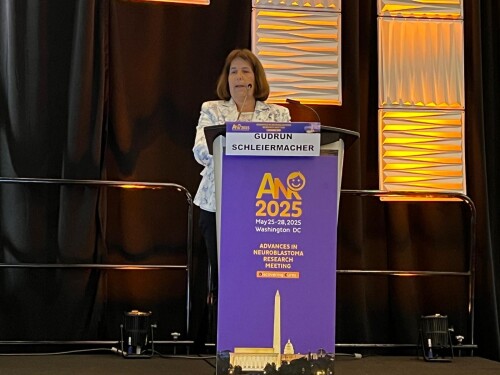A long-underestimated hormonal role in cancer
While it is widely accepted that hormone-dependent cancers account for around 20% of all cancer cases worldwide[1], this study challenges that view. Drawing on a large epidemiological dataset, researchers found that several cancers—including melanoma—occur more frequently in women between puberty and menopause than in men of the same age, a period marked by elevated estrogen levels.
“Clinically, dermatologists have long observed a higher incidence of melanoma in young women, particularly following pregnancy. We set out to understand this phenomenon scientifically,” explains Dr. Lionel Larue, research director at Inserm and team leader at Institut Curie, who is also a co-senior author of the study[2].
A novel pro-metastatic molecular loop
The research identified a previously unknown signaling pathway that is strictly dependent on the female hormonal environment. This regulatory loop involves key molecular players, including ESR1 (the estrogen receptor), which activates GRPR (gastrin-releasing peptide receptor). This, in turn, triggers the pro-metastatic YAP1[3] pathway, which represses E-cadherin (ECAD), a molecule responsible for cell-cell adhesion. Lower ECAD levels facilitate tumor progression. The loop is completed as the reduction in ECAD levels triggers the reactivation of ESR1 transcription.
This mechanism promotes tumor growth, cell migration and invasion, and resistance to anoikis[4]—a form of programmed cell death that normally helps prevent metastatic spread. Because it relies on estrogen-activated ESR1, the mechanism is particularly active in women.
A promising new therapeutic target
Strikingly, GRPR belongs to the G protein-coupled receptor (GPCR) family, which comprises 35% of currently approved drug targets but remains underutilized in oncology. In preclinical models, the administration of specific GRPR antagonists significantly reduced metastasis formation. In addition to its role in tumor progression, GRPR is involved in pain perception. Its modulation could therefore not only suppress metastasis but also improve quality of life for patients. Developing anti-estrogen combination therapies could offer a promising approach to treating melanoma and other cancers characterized by this metastatic loop.
Age and sex: Central to tomorrow’s personalized medicine
This discovery highlights a new dimension of sex-based disparities in cancer and underscores the need to better integrate hormonal and biological factors into cancer prevention, diagnosis, and treatment. It also opens new avenues for repurposing existing drugs for oncology.
“Better understanding the influence of sex and age on cancer development is essential for advancing precision medicine. This research lays the groundwork for innovative therapeutic strategies particularly relevant to women and offers concrete clinical potential,” concludes Dr. Lionel Larue, research director at Inserm.
|
Reference: Targeting GRPR for sex hormone-dependent cancer after loss of E-cadherin. Jérémy H. Raymond, Zackie Aktary, Marie Pouteaux, Valérie Petit, Flavie Luciani, Maria Wehbe, Patrick Gizzi, Claire Bourban, Didier Decaudin, Fariba Nemati, Igor Martianov, Irwin Davidson, Catherine-Laure Tomasetto, Richard M. White, Florence-Mahuteau Betzer, Béatrice Vergier, Lionel Larue*, et Véronique Delmas*. Nature, June 11, 2025. *last co-author. Lionel Larue is the corresponing author https://doi.org/10.1038/s41586-025-09111-x |
Image Caption : Fluorescence microscopy image showing co-expression (yellow) of GRPR mRNA (green) in melanoma cells expressing DCT (red), part of the newly identified signaling pathway characterized by Dr. Lionel Larue’s team.
[1]This work was conducted by Dr. Lionel Larue, Director of Research at Inserm, Head of the Normal and Pathological Development of Melanocytes Team in the Signaling, Radiobiology and Cancer Unit (Institut Curie, Inserm, CNRS, Université Paris Saclay) and Dr. Véronique Delmas, Director of Research at CNRS in the same team.
[2]Sung, H. et al. Global Cancer Statistics 2020: GLOBOCAN Estimates of Incidence and Mortality Worldwide for 36 Cancers in 185 Countries. CA CANCER J CLIN 71, (2021).
[3]The YAP-1 pathway is an essential cellular mechanism that regulates cell growth and survival. Its dysfunction is implicated in several diseases, including cancer, making it a promising target for new therapies.
[4]Anoikis is a form of programmed cell death that occurs when cells lose their attachment to the surrounding environment. This mechanism is essential for maintaining tissue homeostasis and plays a key role in embryonic development, wound healing, and the prevention of tumor formation.



